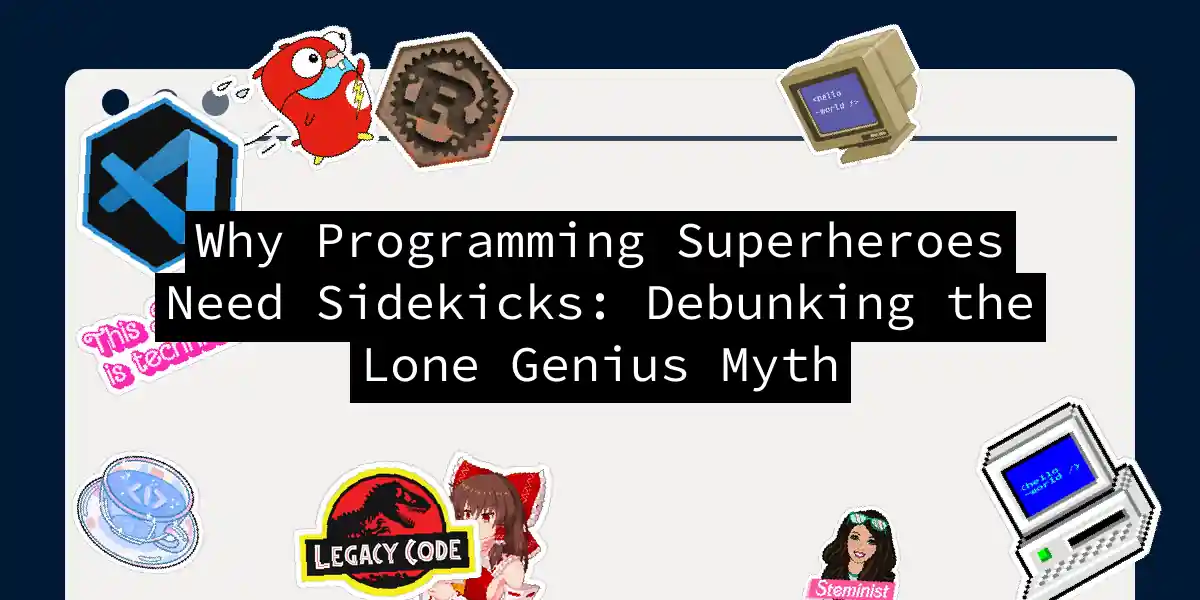Picture this: you’re at a coffee shop wearing noise-canceling headphones, hacking away at your terminal while dramatic synthwave music plays in the background. The screen flashes green text as you single-handedly debug a distributed system using raw assembly. Congratulations - you’ve just failed the programming interview for reality. The truth is, software development isn’t a solo sport. Let’s autopsy the “genius programmer” myth with the surgical precision of a stack trace:
Myth-Busting With Code
Let’s examine a common scenario where collaboration saves the day. Consider this Python code written by our hypothetical lone genius:
def process_data(data):
# Gets data from API, transforms, stores in DB
temp = [x*2 for x in data if x % 2 ==0]
db = MySQL.connect()
cursor = db.cursor()
for item in temp:
cursor.execute(f"INSERT INTO numbers VALUES ({item})")
return len(temp)
Our hero might pat themselves on the back until the team points out:
- No error handling for database connections
- SQL injection vulnerability
- No batching of insert operations
- Magic numbers without explanation
- Missing data validation Now watch how team input transforms it:
def process_data(data: list[int], batch_size: int = 100) -> int:
"""
Processes integer data with validation, batches database inserts,
and returns count of processed even numbers
"""
validate_input(data)
even_numbers = [x * 2 for x in data if is_even(x)]
with DatabaseConnection() as db:
batched_inserts(even_numbers, batch_size, db)
return len(even_numbers)
The diff between these versions? About three code reviews, two architecture diagrams on a whiteboard, and one heated debate about whether tabs are better than spaces (they’re not).
The Collaboration Playbook
Here’s how to build software like a jazz ensemble instead of a one-man band:
- Pair Programming Potlucks
Rotate coding partners daily. It’s like speed dating with syntax highlighting. - PR Bingo Cards
Create review checklists with items like:- Single-responsibility principle violated
- Magic numbers found
- Tests missing for edge cases
- Documentation written in Klingon
- Architecture Battleships
Visualize systems before implementation:
- Error Party Time
Celebrate when someone finds a bug in your code. Seriously - bring cupcakes to the next bug triage meeting.
Why This Matters
The Google Chrome team found that code reviewed by 4+ engineers had 60% fewer post-release issues . Meanwhile, research shows teams producing 10x more value than any individual contributor through collective code ownership . So next time you feel pressured to be the coding equivalent of a Marvel superhero, remember: even Iron Man needed War Machine. Or at least J.A.R.V.I.S. Now go find your programming sidekick - the world needs more dynamic duos and fewer frustrated soliloquies in dark home offices. What’s been your most hilarious team development moment? Share your war stories in the comments while I go explain to HR why we need a budget for rubber ducks.
